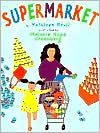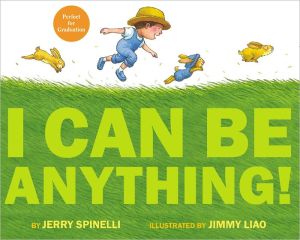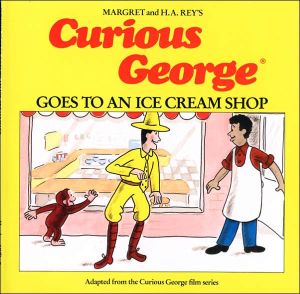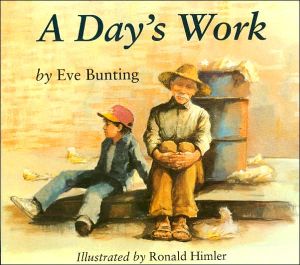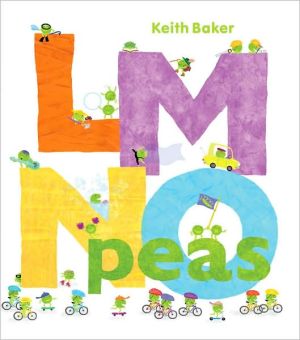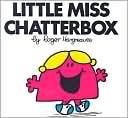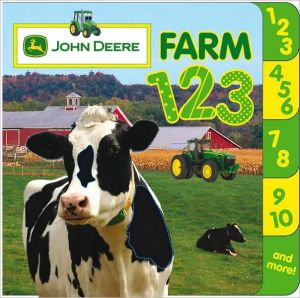Supermarket!
Search in google:
Explains modern supermarkets and how they work, discussing how they organize, display, and keep track of the items they sell.Publishers WeeklyFood for Thought Kathleen Krull's matter-of-fact text anchors each spread of Supermarket, while information implanted in Melanie Hope Greenberg's compositions adds substance. For example, an opening spread says, "It all begins on farms," while a U.S. map painted on the side of the "Happy Farms" barn says, "Certain states are famous for certain foods: Iowa for popcorn, Vermont for maple syrup"; a billboard planted in the field notes the contributions of labor organizer C sar Chavez. ( Sept.) Copyright 2001 Cahners Business Information.
\ Publishers WeeklyFood for Thought Kathleen Krull's matter-of-fact text anchors each spread of Supermarket, while information implanted in Melanie Hope Greenberg's compositions adds substance. For example, an opening spread says, "It all begins on farms," while a U.S. map painted on the side of the "Happy Farms" barn says, "Certain states are famous for certain foods: Iowa for popcorn, Vermont for maple syrup"; a billboard planted in the field notes the contributions of labor organizer C sar Chavez. ( Sept.) Copyright 2001 Cahners Business Information.\ \ \ \ \ Children's LiteratureIn the narrative accompanying each page of Supermarket, the text explains in a general way how food comes to the grocery store, how it is stored, displayed and cared for, as well as something about the ambience of a supermarket. However, if one also reads the incidental bits and interesting facts in a distinctive typeface in boxes¾some on top of the picture, some as if signage in the store, and some in balloons¾the effect is choppy. Greenberg's naive paintings resemble pasted-up collage with skewed perspectives, awkward hand-lettering and plenty of people doing or buying things. The audience for this book is young children who like to search the paintings for activities with which they are familiar. The extra information aims to inform an older reader, however, the total effect is uneven—a few astounding or informative facts, some advice about how to behave when you're shopping, some thoughts about the psychology stores employ to get you in the buying mood, and the assurance that even with Internet shopping and home delivery, the supermarket will always be around. There are few books about grocery stores available for children at this level, and while Gail Gibbons's store books are more informative and orderly, this one is more recent and visually appealing to young children, especially if the boxed material is selectively and judiciously parsed out during a read-aloud. 2001, Holiday House, $16.95. Ages 5 to 9. Reviewer: Susan Hepler\ \ \ School Library JournalPreS-Gr 3-Information about this most frequent and important shopping place ranges from the early history of crops the Pilgrims learned to grow through the amazing, rich variety of products available today. The electric-eye doors open wide, and the shopping carts, piloted by people of all ages and types, roll in a jolly parade through a vast complex of bottles, boxes, cans, baked goods, fresh produce, dairy products, meats, and nonfood items to their final destination, the checkout counters. Added to this munificent display are all kinds of interesting facts about the food pyramid, the journey from field to unloading dock, the evolution of food marketing from barter to superstore, manager and employee activities behind the scenes, festive foods for holidays, and lots of pertinent statistics. Written in a clear and lively style, the text is printed in several typefaces and appears on boxes, bulletin boards, an ice-cream carton, etc., as well as in the usual places at the top and bottom of the pages, a format perfectly suited to the variety of subjects covered. Best of all, however, are the vibrant double-page gouache cartoon-style pictures using flat, decorative forms. Lots of busy people wander among the brilliantly colored arrangements of shapes and sizes for tremendous eye appeal. The only thing lacking is shoppers jabbering on their cell phones.-Patricia Pearl Dole, formerly at First Presbyterian School, Martinsville, VA Copyright 2001 Cahners Business Information.\ \ \ \ \ Kirkus ReviewsA behind-the-shelves look at the inner workings of supermarkets offers readers an in-depth examination of how the myriad foodstuffs come to be available in the grocery store. From the laborers in the fields and delivery trucks racing across town, to an overview of each section of a modern grocery store, readers observe the many steps required to provide the ultimate conveniences. Krull skillfully distills a huge morass of information into palatable, bite-size morsels of information. However, the text lacks definite linear progression. Rather, it has a tendency to jump back and forth among the topics. She moves from describing the farms that produce our staples into a discussion on the economic development of early communities and then on to a description of the food pyramid-all fundamentally interconnected, but presented in a dizzying whirl of information. Greenberg's meticulously detailed illustrations are like grocery stores themselves: a kaleidoscope of sights and colors. Included in the pictures are intriguing tidbits of trivia: how potato chip companies know when to send product out, favorite ice cream flavors, etc. The end result is a tremendous amount of information, both visual and textual, for readers to assimilate. Yet after wading through it all, readers-both young and old-will never look at a supermarket with such innocent complacency as before. A fascinating peek into an amazingly complex industry that is virtually taken for granted by most of us. (Nonfiction. 4-8)\ \
